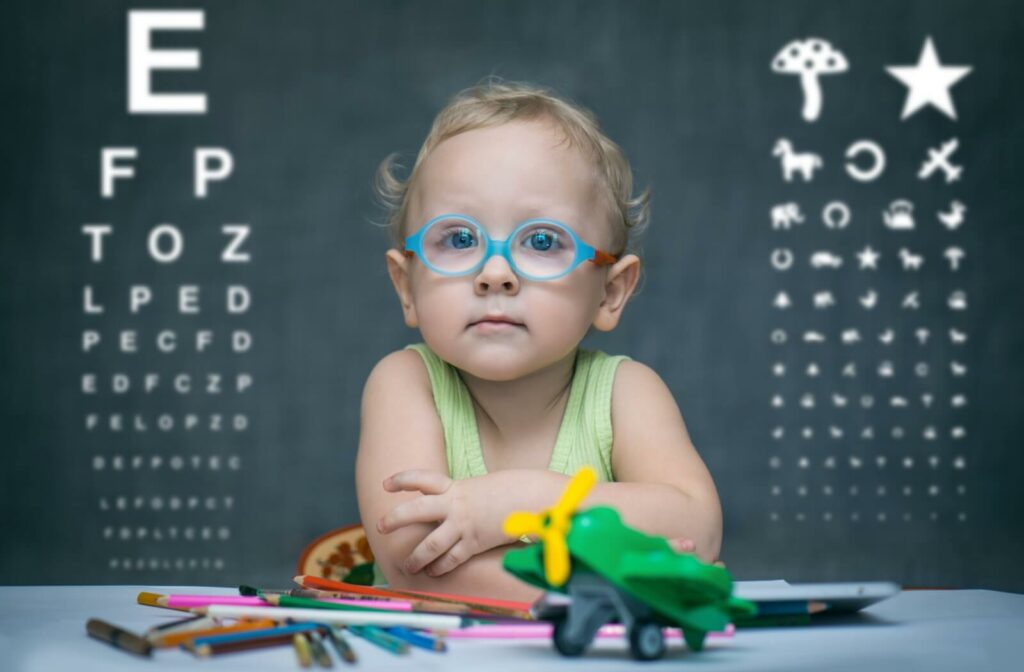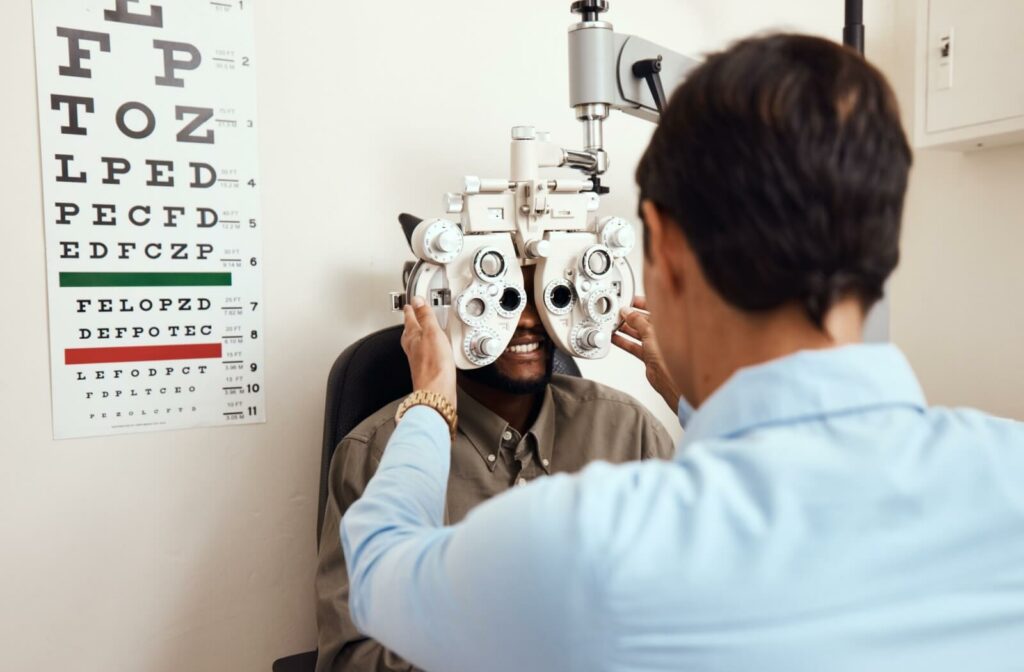Myopia, commonly known as nearsightedness, is a refractive error that causes distant objects to appear blurry while close objects are clear. Many people wonder whether this condition can be reversed.
The short answer is no—myopia can’t be reversed. However, it can be managed effectively with treatment options. For adults, this means vision correction; for children, it will likely also include steps to slow progression of the condition.
If you or your child are suffering from symptoms that might be myopia, make sure to book an eye exam.
Understanding Myopia
Myopia occurs when the eye is too long relative to its focusing power or the cornea is too curved. This causes light entering the eye to focus in front of the retina rather than directly on it, leading to blurry distance vision.
This condition is commonly diagnosed in childhood and typically progresses through adolescence. While myopia usually stabilizes in early adulthood, in some cases it may still worsen with age.
Many factors contribute to the development of myopia, including genetics, environmental influences, and lifestyle choices. Spending long hours focusing on near objects like reading or screen time can increase the risk, especially in children. Moreover, myopia can be influenced by family history, so those with parents who have myopia are at a higher risk.
Myopia can cause blurry vision, eye strain, headaches, and difficulty with night vision. Regular eye exams are essential for monitoring the progression of the condition, particularly in children, whose vision is still developing.
Corrective lenses, such as glasses or contact lenses, are typical options for managing myopia. These lenses help to refocus light on the retina and provide clear distance vision. When vision stabilizes in adulthood, surgical options like LASIK may also be considered for some individuals.
Can Myopia Be Reversed?
Unfortunately, myopia cannot be reversed. However, various treatment options are available to correct and manage the condition. While these treatments can’t eliminate the refractive error, they can significantly improve vision and slow the progression of myopia.
Will Myopia Progress Throughout Life?
Myopia typically progresses during childhood and adolescence as the eye continues to grow. By the time a person reaches their early 20s, their myopia may stabilize, but it can continue to worsen if not properly managed. Myopia can sometimes progress later in life, mainly if certain risk factors like prolonged close work or lack of outdoor activity are present.
Environmental factors play a significant role in how myopia progresses. Studies suggest that increased time spent outdoors may reduce children’s risk of myopia progression. Natural light exposure helps regulate eye growth and may slow down the elongation of the eyeball that leads to myopia. Limiting excessive screen time and practicing the 20-20-20 rule (taking a 20-second break every 20 minutes of screen time) may also be helpful.
Genetic factors also influence the likelihood of myopia progressing, with children of myopic parents being more likely to develop and experience worsening myopia. Regular eye exams are essential for monitoring myopia progression and adjusting treatment to ensure optimal vision.
Other underlying health conditions or changes in your overall vision needs can also impact myopia progression. Consulting with an eye care professional is important to assess these factors and create a personalized management plan.
Slowing the Progression of Myopia
While myopia can’t be reversed, there are effective ways to slow its progression and improve overall vision. Early intervention and regular eye exams are vital to managing myopia, particularly in children. Various treatments and lifestyle changes can help keep myopia from worsening.
Eyeglasses & Contact Lenses
The most common way to correct myopia is through eyeglasses or contact lenses. These tools help redirect light onto the retina, improving distance vision. While they don’t slow myopia’s progression, they do offer clear, sharp vision for daily activities. Special lenses, like progressive lenses or bifocals, can provide additional comfort and focus for those with multiple vision needs.
Some studies show that specially designed multifocal lenses or contact lenses may slow myopia progression in children by reducing eye strain and encouraging more even eye growth. Regular check-ups ensure that prescription adjustments are made as needed to maintain vision clarity.
Orthokeratology (Ortho-K)
Ortho-k is a non-surgical treatment that involves wearing specially designed contact lenses overnight to reshape the cornea. The lenses gently alter the eye’s curvature, temporarily correcting myopia and allowing for more precise vision during the day without needing glasses or contacts. Studies have shown that ortho-k can slow myopia progression in children, offering a more long-term solution than traditional corrective lenses.
This treatment requires ongoing use to maintain its effects, but it can be an excellent option for children and young adults with myopia. Regular eye exams are essential to monitor the safety and effectiveness of ortho-k.

Is Myopia Progression Dangerous?
In most cases, myopia progression is not life-threatening. However, severe myopia, also known as high myopia, can lead to increased risks of other eye conditions late in life. These conditions include glaucoma, cataracts, and retinal detachment, which can lead to permanent vision loss if left untreated.
To reduce these risks, it’s important to manage myopia properly. Regular eye exams, early interventions, and appropriate treatments can help maintain your vision and reduce the likelihood of these serious complications. Always consult an eye care professional if you notice significant changes in your vision.
Schedule a Consultation with Vision Care Grayslake
If you’re concerned about myopia or its progression, schedule a consultation with Vision Care Grayslake. Our team of professionals is dedicated to providing personalized care to help you manage your vision and keep your eyes healthy. Reach out today to learn more about your treatment options and find the best solution for your vision needs.




